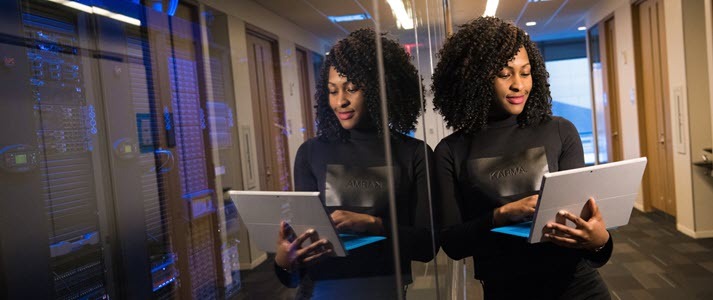How Millennial Leadership is Changing the Way Businesses Run

Millennials represent an increasingly large portion of the current workforce, and understanding their unique social and historical context is critical for organizations looking to hire, develop and retain effective employees.
Generational shifts in the workplace are naturally occurring phenomena. While the similarities between generations tend to outnumber the differences, those differences can manifest themselves in clear ways. One example of this is in expectations of leaders, which can vary considerably between workforce generations.
"Millennials make up the largest generation of our workforce today," said Dianne Greene, VP Diversity and Inclusion Strategy and Operations at ADP. "And they look for different employee needs than other generations."
Here we will discuss how millennial leadership is influencing organizational approaches to communication, leadership and culture.
Millennials Defined
The term "millennials" generally describes individuals born between 1981 and 1996. With this in mind, it's worth considering a few experiences that have shaped how this group sees the world:
Millennials grew up during the 2008 Great Recession, a period that affected the stability of generational wealth and also led to the growth of the freelance gig economy.
Millennials came of age in a time when the internet's reach was expanding significantly. This expansion enabled on-demand, always-on access to information, entertainment and platforms for self-expression, as well as revenue generation.
As a cohort, U.S. millennials are more racially and ethnically diverse than previous generations. They have experienced the election of the first African-American president as well as landmark legal and social developments related to gender, race and sexual orientation.
Millennial Leadership and Communication
All businesses are currently experiencing a shift in workforce demographics. Millennials have entered and, in increasing percentages, are leading divisions within an organization, or even entire businesses. As a result, a key point of consideration in working with millennials is communication. Firms must remain close to and evolve with the communication approaches that this generation of leaders expects.
For instance, millennial leaders tend to believe that their organizations should serve a greater purpose within their respective communities beyond generating revenue, and this point should be reflected in corporate initiatives and communications between the business, its employees and the world at large to secure the favor of millennials. Ensuring that the organization's actions speak to its greater purpose at every juncture has become business critical, which represents a shift from what other generations may have expected of their workplaces.
"Studies by EY, SHRM and other notable resources consistently point to the emphasis millennials put on purposeful work, social responsibility, environmental sustainability and inclusion practices (among other needs)," said Greene. "At ADP we are meeting those needs through our programs, polices and people practices ensuring we continue to be an employer of choice for all generations. Read our Global Corporate Social Responsibility Report learn more."
Millennial Leadership and Diversity and Inclusion
Because millennials view diversity and inclusion as valuable components of prosperous business and society, it makes sense that they would want to be part of organizations that reflect that view. To attract millennial talent, firms should therefore personify diversity and inclusion in their culture. This means ensuring that all stakeholders drive performance and innovation through a sense of shared belonging and a belief in the organization's greater purpose. It is also essential for businesses to address matters of corporate social responsibility and philanthropy, which are issues of great importance to millennials in particular.
Millennials represent an increasingly large portion of the current workforce, and understanding their unique social and historical context is critical for organizations looking to hire, develop and retain effective employees and achieve a sustainable competitive advantage in the marketplace.
Learn more about diversity, equity and inclusion resources to help your organization do and be its best.
Related:
- Leadership Development 101: Leading Through Effective Communication
- Learn more about how to drive performance through strengths-based engagement.



